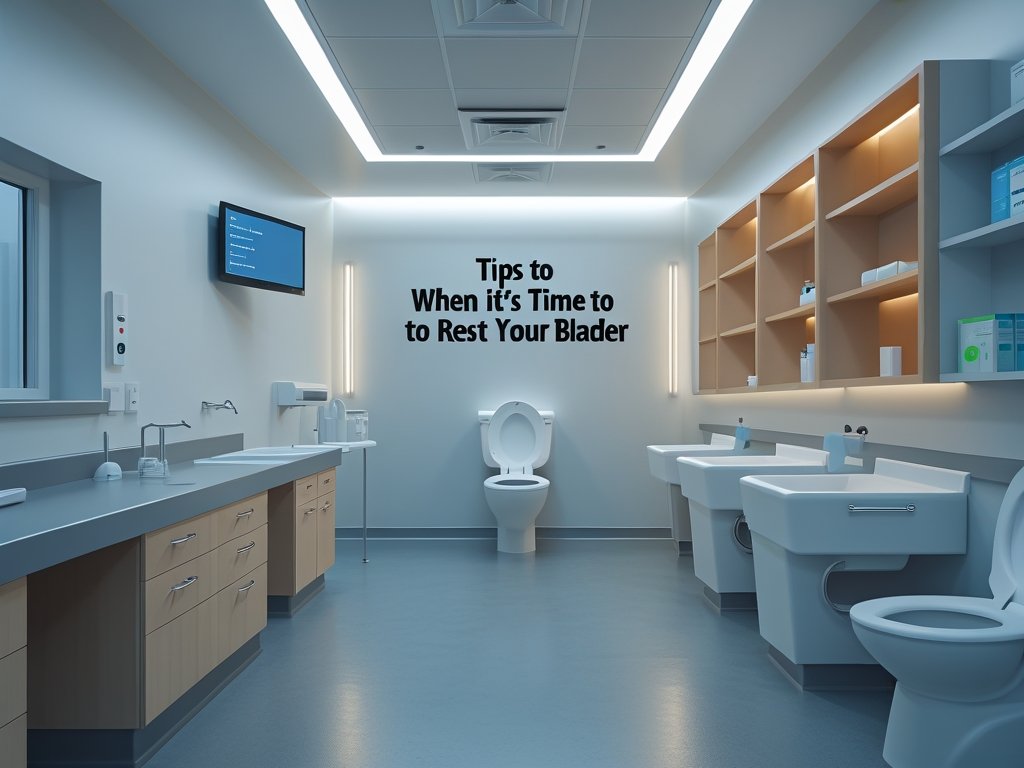Our bladders are unsung heroes, working tirelessly behind the scenes to maintain our comfort and freedom. We often take their function for granted until something goes wrong – a sudden urge, an embarrassing leak, or persistent discomfort. But recognizing when your bladder is sending signals that it needs rest isn’t about reacting after problems arise; it’s about proactive self-awareness. It’s understanding the subtle cues our bodies offer and responding thoughtfully to prevent issues from escalating. This article aims to equip you with the knowledge to listen to your body, identify those crucial moments for bladder rest, and implement strategies that support long-term urinary health.
Ignoring these signals can lead to a cascade of uncomfortable consequences, ranging from frequent bathroom trips disrupting daily life to more serious conditions requiring medical intervention. The good news is that many bladder issues are preventable or manageable with simple lifestyle adjustments and increased awareness. This isn’t about deprivation or restriction; it’s about finding a harmonious balance between your needs and your bladder’s capacity, fostering a relationship of mutual respect and well-being. It’s also important to remember that everyone is different, and what works for one person may not work for another.
Recognizing the Signals: What Your Bladder Might Be Telling You
The bladder isn’t just a storage container; it’s an active participant in our overall health. It communicates its state through a variety of signals, some obvious, others far more subtle. Often, we dismiss these early warnings, attributing them to everyday occurrences like drinking too much fluid or experiencing stress. However, consistent attention to these signals is the first step towards understanding your individual bladder habits and needs. A healthy bladder should allow you to comfortably hold urine for a reasonable amount of time – typically 2-4 hours – without urgency or discomfort. When that changes, it’s a sign something may be amiss.
A key indicator is frequency. While normal frequency varies based on fluid intake and individual factors, a sudden increase in how often you need to urinate, especially if accompanied by small amounts of urine each time, warrants attention. Similarly, urgency – that overwhelming, immediate need to find a bathroom – is a clear signal your bladder isn’t functioning optimally. This urgency can sometimes be paired with a feeling of pressure or discomfort in the lower abdomen. Don’t mistake thirst for hunger; staying hydrated is crucial but understanding your fluid intake and its effect on your bladder is vital too. To better track hydration levels, consider using a daily hydration chart to monitor your fluid intake.
Finally, pay attention to any pain or burning sensation during urination. While this could indicate an infection (and should prompt medical consultation), it can also be a sign of underlying bladder irritation. Ignoring these signals won’t make them disappear; they often worsen over time. Understanding the difference between normal bodily functions and potential signs of stress on your bladder is paramount to proactive self-care.
Lifestyle Factors Impacting Bladder Health
Our daily habits significantly influence our bladder’s health. Certain beverages are notorious bladder irritants, including caffeine, alcohol, carbonated drinks, and citrus juices. These substances can increase urine production or irritate the bladder lining, leading to urgency and frequency. Similarly, spicy foods can sometimes trigger bladder discomfort in sensitive individuals. It’s not necessarily about eliminating these items entirely, but being mindful of your consumption and observing how they affect your body.
- Keep a fluid diary for a few days: This helps you understand your typical intake and identify potential triggers.
- Space out your fluid intake throughout the day: Avoid large volumes at once.
- Empty your bladder regularly: Don’t hold it for extended periods, as this can weaken bladder muscles over time.
Beyond diet, consider your bowel habits. Constipation can put pressure on the bladder, leading to urinary issues. A fiber-rich diet and regular exercise are essential for maintaining healthy bowel function and, consequently, a healthier bladder. Prioritize a balanced lifestyle that supports both hydration and digestive health. To support overall wellness, it’s helpful to understand how to prepare grains for optimal bladder comfort.
The Role of Pelvic Floor Muscles
The pelvic floor muscles play a critical role in supporting the bladder and urethra, helping to control urination. Weakened pelvic floor muscles can contribute to urinary leakage or urgency because they struggle to provide adequate support. This is particularly common after childbirth, with age, or due to chronic coughing. Kegel exercises, also known as pelvic floor muscle training, are an effective way to strengthen these muscles and improve bladder control.
- Identify your pelvic floor muscles: Imagine you’re trying to stop the flow of urine midstream (though don’t regularly practice stopping mid-flow as it can be counterproductive). These are the muscles you engage.
- Contract the muscles: Squeeze and hold for a few seconds, then release.
- Repeat: Aim for 10-15 repetitions several times a day.
Consistency is key with Kegel exercises. It may take weeks or months to notice significant improvements, but the effort can yield substantial benefits in terms of bladder control and overall pelvic health. For more advanced support, consider long-term habits for strengthening pelvic control.
When to Seek Professional Help
While many bladder issues can be managed with lifestyle adjustments, it’s crucial to recognize when professional help is needed. Persistent urgency or frequency that interferes with your daily life should prompt a visit to your doctor. Similarly, if you experience pain during urination, blood in your urine, fever, or lower back pain alongside urinary symptoms, seek medical attention immediately as these could indicate an infection or other serious condition.
Do not self-diagnose. A healthcare professional can accurately assess your situation, rule out underlying medical conditions, and recommend appropriate treatment options. These might include medication, physical therapy, or further diagnostic testing. Early intervention is often key to preventing complications and restoring optimal bladder function. Remember that seeking help isn’t a sign of weakness; it’s a proactive step towards taking care of your health and well-being. Learning how to discuss symptoms with your doctor can streamline the process.
To support bladder function during stressful times, remember these essential steps for stress management and bladder health.
And finally, remember that incorporating moments of rest throughout your day, such as those outlined in deep rest techniques can significantly improve overall bladder regulation.





















